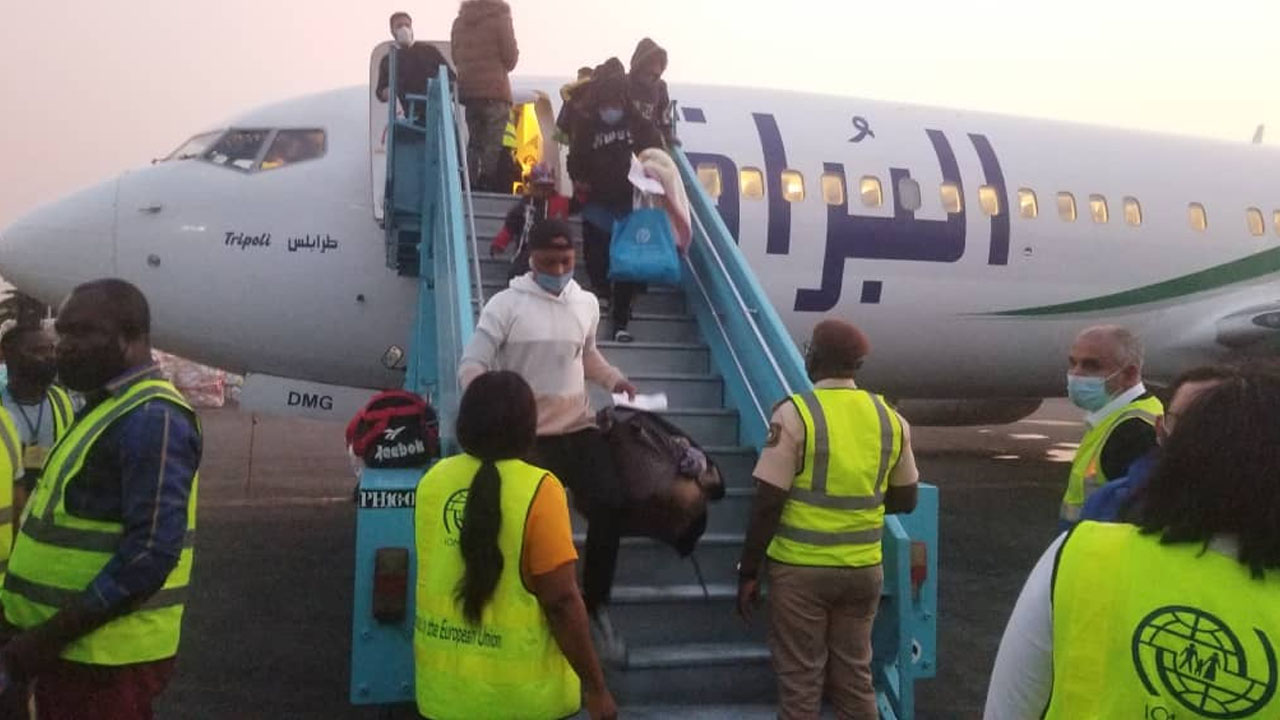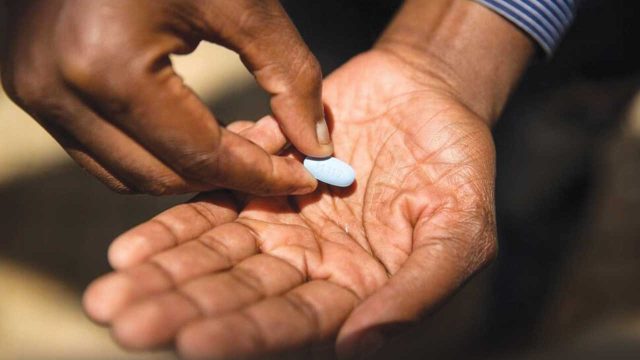There are growing concerns over increasing cases of Sexually Transmitted Diseases (STDs), including Human Immuno-deficiency Virus (HIV)/Acquired Immune Deficiency Syndrome (AIDS), hepatitis, syphilis and gonorrhoea.
There are also reports that the country has the highest paediatric HIV cases worldwide due to gaps in Prevention of Mother-To-Child Transmission (PMTCT) of HIV. Mother-to-child transmission accounts for over 90 per cent of HIV infections in children less than 15 years of age, according to National AIDS and STDs Control Programme (NASCP).
In fact, experts at NASCP, National Agency for Control of AIDS (NACA), Living Health International, Journalists Against AIDS (JAAIDS), Joint United Nations Programme on HIV/AIDS (UNAIDS), United States President’s Emergency Preparedness Fund for AIDS Relief (PEPFAR) are alarmed.
It was a subject of discussion at a recent parley between development experts, government officials and international donors with journalists in Lagos. The HIV Media Training, which took place from Monday 8th – Friday 12th July 2024 in Lagos, was supported by PEPFAR Nigeria through the Henry Jackson Foundation Medical Research International (HJFMRI) Ltd Gte.
To address the situation, Director of Programmes at NASCP, Dr. Mercy Morka, said the goal of PMTCT scale up is to eliminate mother-to-child transmission of HIV, Syphilis and Hepatitis B by 2030.
According to a new World Health Organisation (WHO) report – Implementing the global health sector strategies on HIV, viral hepatitis and sexually transmitted infections, 2022–2030, global HIV, viral hepatitis epidemics and STDs continue to pose significant public health challenges, causing 2.5 million deaths each year.
New data show that STDs are increasing in many regions. In 2022, WHO Member States set out an ambitious target of reducing the annual number of adult syphilis infections by ten-fold by 2030, from 7.1 million to 0.71 million. Yet, new syphilis cases among adults aged 15-49 years increased by over 1 million in 2022 reaching eight million. The highest increases occurred in the Region for the Americas and the African Region.
Four curable STDs – syphilis (Treponema pallidum), gonorrhea (Neisseria gonorrhoeae), chlamydia (Chlamydia trachomatis), and trichomoniasis (Trichomonas vaginalis) – account for over one million infections daily. The report notes a surge in adult and maternal syphilis (1.1 million) and associated congenital syphilis (523 cases per 100 000 live births per year) during the COVID-19 pandemic. In 2022, there were 230 000 syphilis-related deaths.
New data also show an increase in multi-resistant gonorrhoea. As of 2023, out of 87 countries where enhanced gonorrhoea antimicrobial resistance surveillance was conducted, nine countries reported elevated levels (from five per cent to 40 per cent) resistance to ceftriaxone, the last line treatment for gonorrhoea. WHO said it is monitoring the situation and has updated its recommended treatment to reduce the spread of this multi-resistant gonorrhoea strain.
In 2022, around 1.2 million new hepatitis B cases and nearly one million new hepatitis C cases were recorded. The estimated number of deaths from viral hepatitis rose from 1.1 million in 2019 to 1.3 million in 2022 despite effective prevention, diagnosis, and treatment tools.
New HIV infections only reduced from 1.5 million in 2020 to 1.3 million in 2022. Five key population groups — men who have sex with men, people who inject drugs, sex workers, transgender individuals, and individuals in prisons and other closed settings — still experience significantly higher HIV prevalence rates than the general population. An estimated 55 per cent of new HIV infections occur among these populations and their partners. HIV-related deaths continue to be high. In 2022, there were 630 000 HIV related deaths, 13 per cent of these occurring in children under the age of 15 years.
Morka, a public health expert, said efforts by countries including Nigeria and partners to expand STDs, HIV and hepatitis services are bringing formidable gains. WHO has validated 19 countries for eliminating mother-to-child transmission of HIV and/or syphilis, reflecting investments in testing and treatment coverage for these diseases among pregnant women. Botswana and Namibia are on the path to eliminating HIV, with Namibia being the first country to submit a dossier to be evaluated for the triple elimination of mother-to-child transmission of HIV, hepatitis B and syphilis.
Globally, HIV treatment coverage reached 76 per cent, with 93 per cent of people receiving treatment achieving suppressed viral loads. Efforts to increase Human Papilloma Virus (HPV) vaccination- to prevent cervical cancer- and screening for women with HIV are ongoing. Diagnosis and treatment coverage for hepatitis B and C have seen slight improvements globally.
The report outlines the following recommendations for countries to strengthen shared approaches towards achieving the targets: implement policy and financing dialogues to develop cross-cutting investment cases and national-level sustainability plans; further consolidate and align disease-specific guidance, plans, and implementation support within a primary health care approach; accelerate efforts to address ongoing criminalisation, stigma, and discrimination within health settings, particularly against populations most affected by HIV, viral hepatitis, and STDs; expand multi-disease elimination approaches and packages, drawing from lessons learned from the triple elimination of mother-to-child transmission and strengthen the focus on primary prevention, diagnosis and treatment across the diseases to raise awareness especially for hepatitis and STDs.
Morka said NASCP is using the overall approach of find all, test all, treat all and report all. She said PMTCT and Anti Retroviral Therapy (ART) coverage for Children L (CLHIV) between 0-14 years, remains low at 34 per cent and 29 per cent respectively.
The public health expert said scale-up and state-specific implementation plans now form the basis for the National PMTCT approach and guide the National MTCT elimination targets to be achieved by each state.
She said despite progress, gaps exist that hinder elimination of MTCT (eMTCT) of HIV, Syphilis and Hepatitis B. Inconsistent quality of healthcare services and lack of standardized care protocols contribute to challenges in accessing reliable HIV prevention and treatment for pregnant women and children in Nigeria. Shortage of trained healthcare personnel in Nigeria leads to inadequate support and services for pregnant women and children in accessing HIV prevention and treatment.
Morka said integrating HIV testing into maternal and child healthcare services enhances early detection and intervention opportunities.
She recommended among other things: PMTCT should be provided as a component of Ante Natal Care (ANC); efforts should be towards improving the coverage of ANC for more system-wide effect; testing to be done at home, in unconventional settings and in Hospital Facilities (HFs) – to ensure accountability; PMTCT data should be disaggregated by setting that is unconventional facilities and health facility; the government can provide interventions at any Service Delivery Point (SDP) regardless of the presence of an implementing partner; scale-up of HIV Testing Service (HTS) to women at home who do not receive any form of care during pregnancy in a phased and systematic manner; and use of escort services and mentor mothers and community systems/Civil Society Organisations (CSOs) to improve linkage.
UNAIDS Representative, Dr. Murphy Akpu, said prevention is key. He said HIV prevention services are interventions that aim to reduce or stop the transmission of HIV. These services are implemented to either protect an individual, the community, or are rolled out as public health policies.
Initially, HIV prevention programmes focused primarily on preventing the sexual transmission of HIV through behavior change.
For a number of years, the ABC approach (“Abstinence, Be faithful, Use a Condom”) was used in response to the growing epidemic in sub-Saharan Africa.
However, by the mid-2000s, it became evident that effective HIV prevention needs to take into account underlying socio-cultural, economic, political, legal and other contextual factors. As the complex nature of the global HIV epidemic has become clear, forms of ‘combination prevention’ have largely replaced ABC-type approaches.
Combination prevention is the combining of different HIV services to reduce risk of HIV infection. Akpu said one HIV prevention service alone is not enough to change behavior that will reduce risk of HIV. He said the combining of use behavioral, biomedical and structural prevention strategies is important.
Biomedical interventions are related to a particular tool, commodity or mechanism of HIV prevention. Behavioral interventions relate to approaches which alter individual conduct in order to lower the risk of exposure to HIV.
Structural interventions act on social, economic, political, environmental, social, cultural, organisational, community, legal, or policy factors.
Combination prevention includes Pre-Exposure Prophylaxis (PrEP) and Post-exposure prophylaxis (PEP). PEP is the use of antiretroviral treatment for a short period of time to reduce the likelihood of HIV infection after potential exposure, either occupationally or through non-occupationally that is forced sexual intercourse/rape.
HIV treatment requires adherence to life-long therapy with consistent, fully-suppressive dosing. PrEP is needed during “periods” of high HIV risk. Both ART and PrEP require optimal adherence. Individuals taking PrEP require ongoing risk assessment and PrEP can be discontinued if they: acquire HIV infection; are no longer at substantial risk for HIV infection; decide to use other effective prevention methods.
Motivation for adherence is different: ART is taken by HIV-infected persons who may have symptoms to remain healthy and prevent onward transmission, while PrEP is taken by HIV uninfected persons who are largely healthy to prevent acquisition of infection.
Delivered as two injections within four week and subsequent re-injections every eight every two months.
Akpu said clinical trials have shown CAB-LA to currently be the most effective form of PrEP, but it is costly and not tool available in the market. CAB-LA is more long-lasting and discreet than oral PrEP.
He said PEPFAR will start pilot implementation of CAB-LA in some sites in Lagos from August 2024.
Meanwhile, according to WHO while the ambitious targets set by member states for 2025 and 2030 are helping to drive progress – the progress is patchy across disease areas. With many indicators remaining off-track to achieve global targets, more political will and commitment are to urgently accelerate the efforts.
Akpu said there are new PrEP innovations –CAB-LA. CAB-LA is a long-acting antiretroviral PrEP (ARV) medicine.


















